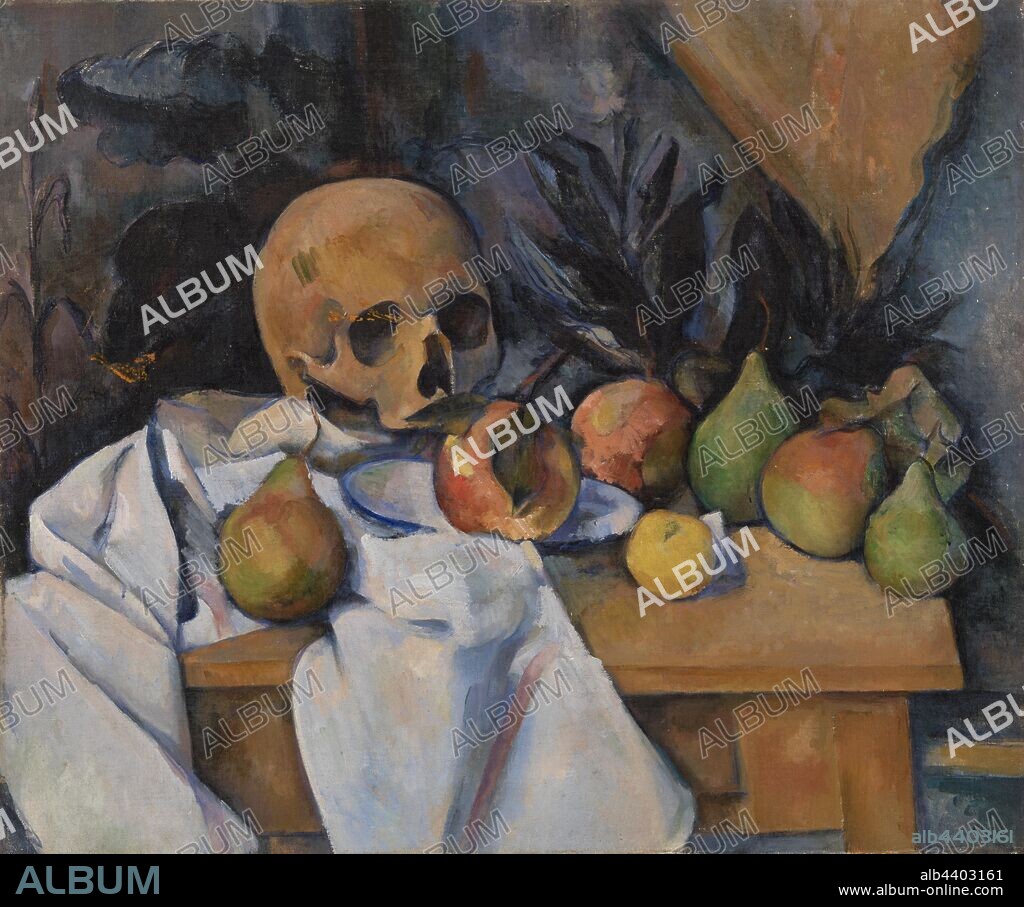alb4403161
Paul Cézanne: Still Life with Skull (Nature morte au crâne), Paul Cézanne, 1896–1898, Oil on canvas, Skulls appear frequently in the European still life tradition, serving as reminders of the fleetingness of life. Cézanne tended to avoid such props, however, favoring more ordinary household items like napkins, fruit, and ceramic vessels. It wasn't until the last decade of his career that Cézanne began to represent skulls with some regularity--perhaps reflecting a preoccupation with his own mortality. The smudges of orange paint across the eye socket are probably the result of this canvas leaning against another in his Aix-en-Provence studio., Overall: 21 3/8 x 25 3/4 in. (54.3 x 65.4 cm).

|
Add to another lightbox |
|
Add to another lightbox |



Caption:
Paul Cézanne: Still Life with Skull (Nature morte au crâne), Paul Cézanne, 1896–1898, Oil on canvas, Skulls appear frequently in the European still life tradition, serving as reminders of the fleetingness of life. Cézanne tended to avoid such props, however, favoring more ordinary household items like napkins, fruit, and ceramic vessels. It wasn't until the last decade of his career that Cézanne began to represent skulls with some regularity--perhaps reflecting a preoccupation with his own mortality. The smudges of orange paint across the eye socket are probably the result of this canvas leaning against another in his Aix-en-Provence studio., Overall: 21 3/8 x 25 3/4 in. (54.3 x 65.4 cm)
Personalities:
Credit:
Album / quintlox
Releases:
Model: No - Property: No
Rights questions?
Rights questions?
Image size:
5760 x 4801 px | 79.1 MB
Print size:
48.8 x 40.6 cm | 19.2 x 16.0 in (300 dpi)
Keywords:
1896–1898 • AIX-EN-PROVENCE STUDIO • ANATOMY: SKULL • ANOTHER • AVOID • CANVAS LEANING • CANVAS • CAREER • CERAMIC VESSELS • CÉZANNE BEGAN • CÉZANNE TENDED • CRANEO • CRANEOS • CRANIUM • CRANIUMS • EUROPEA • EUROPEAN • EYE SOCKET • FAVORING • FLEETINGNESS • FREQUENTLY • FRUIT • FRUITS • LAST DECADE • LIFE TRADITION • LIFE • NAPKINS • NATURE MORTE AU CRÂNE • OIL • ORANGE PAINT ACROSS • ORDINARY HOUSEHOLD ITEMS • OWN MORTALITY • PAUL CEZANNE • PERHAPS REFLECTING • PREOCCUPATION • PROPS • REGULARITY • REMINDERS • REPRESENT SKULLS • RESULT • SERVING • SKULL • SKULL, ANATOMY • SKULLS • SMUDGES • WASN'T
 Pinterest
Pinterest Twitter
Twitter Facebook
Facebook Copy link
Copy link Email
Email

